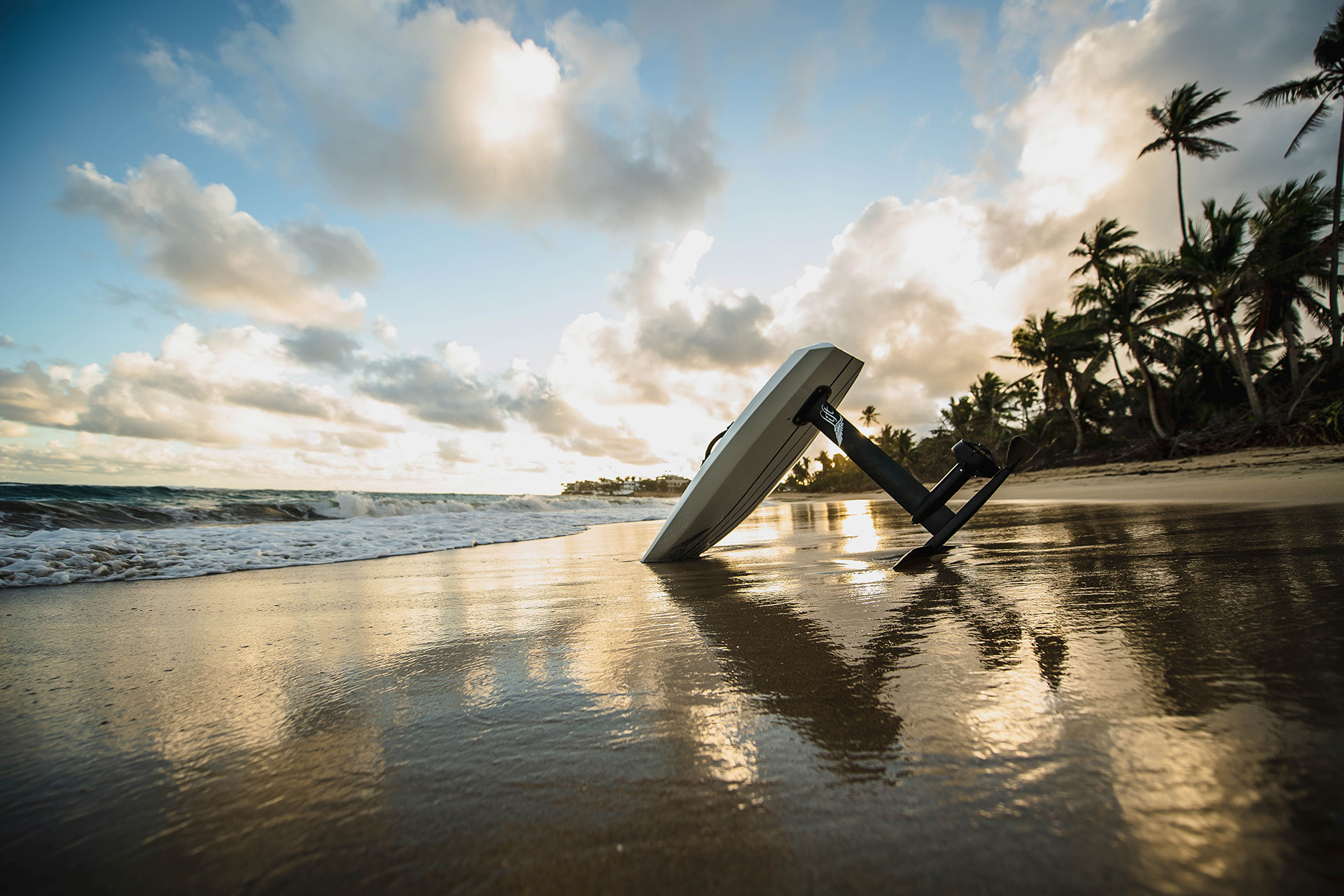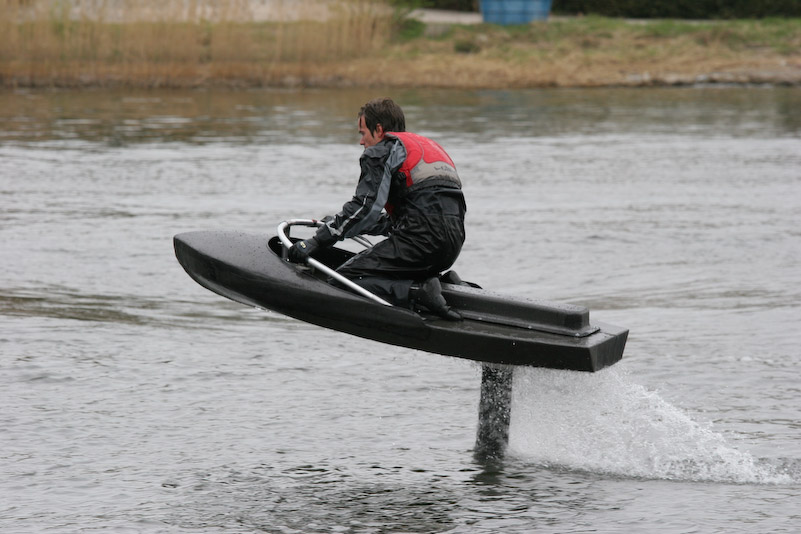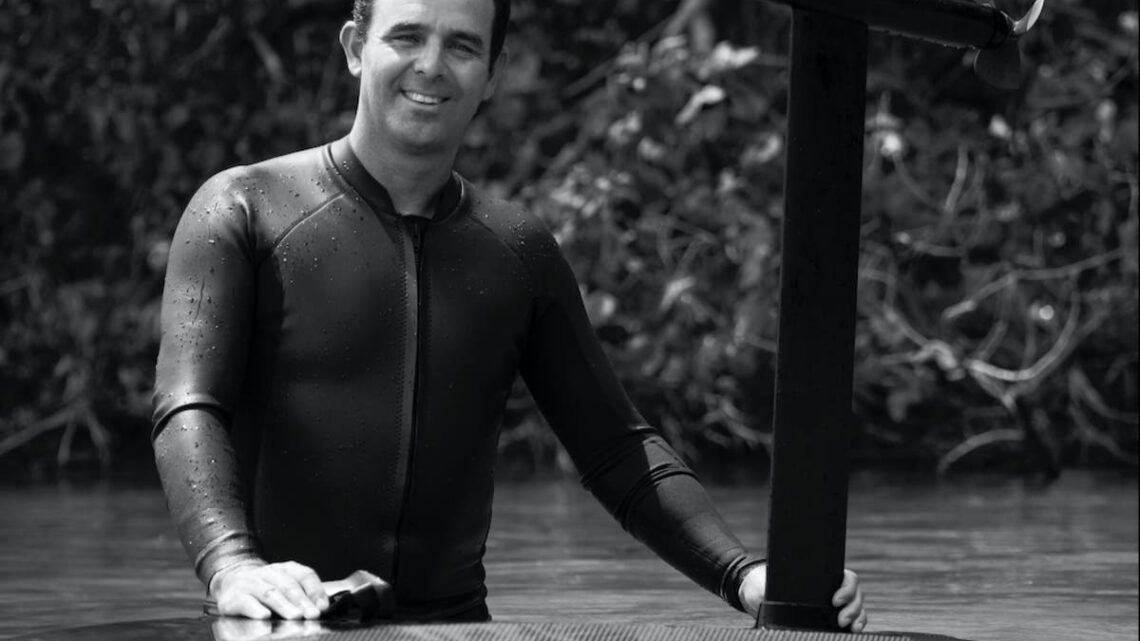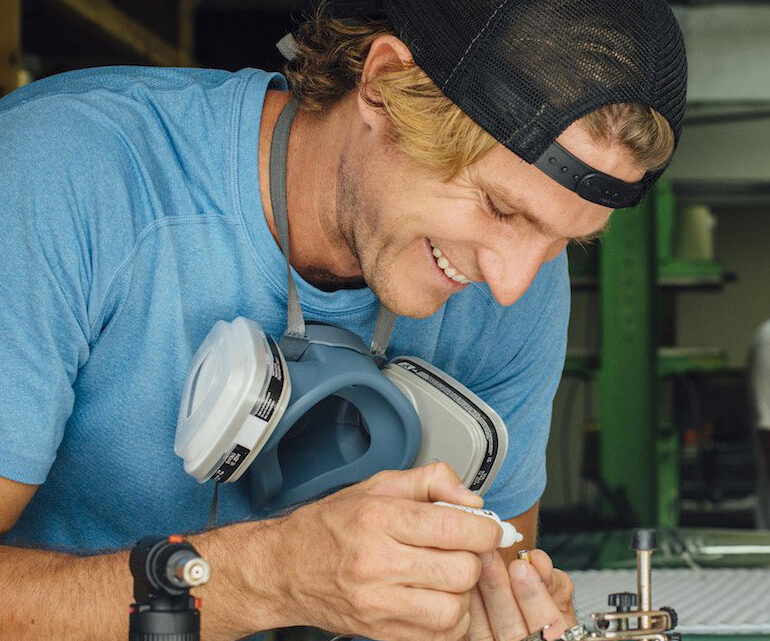
How to ride an efoil
Let’s ask the experts how to ride an electric hydrofoil. We are glad that we could get some tips from 3 absolute E-Foil veterans and industry experts.
- Merten who built the DIY E-FOIL forum efoil.builders and has motivated and inspired E-Foil builders all around the world with his Youtube channel
- And David, CEO and Founder of Fliteboard. One of the first commercially available electric hydrofoils worldwide.
- And last but not least some great learning videos from Lift Foils CEO Nick Leason
Hello, Merten here.
Andreas summed it up nicely. You will likely crash a few times before you dial it. Don’t give up! Most beginners get up on the foil within minutes and once you fly silently across the water, that’s all you want to do. I remember my first time like it was yesterday. Don Montague took me out on the Jetfoiler in April 2017. I got very clear instructions from Don and minutes later I was foiling. After that day I was 100% determined to succeed with my own build.A standing dock-start is the easiest unless you have a big floaty board. But if you don’t have a dock just accelerate the board, keep nose down = weight forward, board will stabilize and it’s easy to pop up, similar to surfing but you have more time and can transition to knees before standing.
As you accelerate keep the nose down. Lean forward, most of your weight will be on your front foot. This is important. If you can’t keep it down and pop on the foil unwanted, you are standing to far in the back. Adjust your stance.
Once you reach foiling speed and feel comfortable skimming over the water with the board on water, it’s time to do try some short flights on the foil.Foiling speed depends on your wing setup, for my setup it is around 12mph or 19 km/h. Keep the speed constant at foiling speed and gently shift your weight back. Once you feel and see the board come up, immediately shift your weight back forward and land. Get a feeling for this transition before you try to stay on the foil.
Now go for some longer flights. Don’t go too fast, but stay above foiling speed. You may need to reduce the throttle a bit once you are on the foil. It can be challenging to judge your flight height. Just try to stay low.
Turns – that takes a little practice but it’s not hard. Start with wide turns. You will likely have a preference of direction, for me backside turns were easier in the beginning. Keep you body inline with the mast at all times. And as your turns get tighter you may need to push the throttle a bit while you turn since you cause additional drag and slow down.

Hello. David here.
If starting lying down, get to your knees first at a relatively slow speed – and then put one foot forward and stand up with all your weight pushing through your front foot. This is different to popping up on a surfboard which can weight your back foot and get you foiling before you are ready – resulting in a crash.
The foil and motor want to push the nose up, so It’s most important to keep your weight as far forward as possible, knees forward and then pushing down through your front foot until the board is planning and flattens off. Keep your movements very smooth and subtle. Ensuring to keep your weight over the centre line of the board. Keep your core engaged but your upper body relaxed.
Once planning and at foiling speed (which depends on the wing you are using) very carefully and with a relatively wide stance to start – shift weight from front foot to both feet. Continue to shift weight very gradually to your rear foot until the foil engages and the board leaves the water.
The first sign of this is usually the sound of the board skipping on the water stopping. As soon as you leave the water shift weight slightly forward again and touch down. Continue to do this, each time foiling for slightly longer. Try and foil as low as possible. This is like training wheels. It lets your brain automatically adapt to the new balance of riding the foil, but stops you from having big crashes from a greater height.
Practice rising slightly and touching down until you start foiling for longer and longer periods. Before long you will be foiling continuously. The more you relax and trust the foil and keep your movements subtle – the smoother and safer your foiling will be. Some people will be foiling continuously in 10 minutes. Others will have a number of sessions before it clicks. Everyone is different. Take it slow, keep it safe – give your brain time to wire itself for foiling and then it becomes automatic.
Don’t fight the foil. Concentrate on being subtle and gentle and keeping your weight over the centre line. Imagine you are balancing in a tightrope or fit ball. The bigger your movements the more you need to correct and the bigger your crash! Bigger wings foil slower, and are much easier to learn with. The Fliteboard Cruiser wing for example is a much easier wing to learn on than Flyer, or a kitefoil wing which is much smaller. Surf foil wings will be easier but not very efficient at speed. Learn to fall in the direction that the board falls. Go with the board, otherwise you can fall onto the board or foil.
Have fun and get ready for an amazing feeling the first time you foil continuously!

eFoil learning videos:
We own by now 2 eFoils from Lift Foils and in early days Nick Leason, founder and CEO of Lift Foils, who became a good friend, was assisting us via WhatsApp from Puerto Rico while we were practising in Germany in the winter of 2018. Nick also published a few eFoil tutorial videos which shall help everybody to learn how to ride an electric hydrofoil.
The first video is explaining where you find the right spot, which is safe for you and for others. It also explains how to use the remote control and chose the right settings for beginners. Start on your belly and get confident before you go on your knees. Practise on knees before you stand up to surf on the surface. Keep the nose of your eFoil down. Falling into the water is normal as you practise, but always use the last control to hump to the side or the back of the board.
The second video is about getting you to foil. Before you foil however, learn how to control the throttle of your hand controller and cruise and make turns on the surface. Once you feel confident put your weight slightly back until the board starts flying. Just fly for a second and go down again by putting weight to the front. Go up and down to practise.
Your throttle controls the speed, but you height is controlled by your weight. Try to find a foot position where you lean to the front while riding on the surface and stand normal while flying. Important is to keep a constant speed.

*Article from “https://e-surfer.com/en/how-to-ride-an-electric-hydrofoil/”
